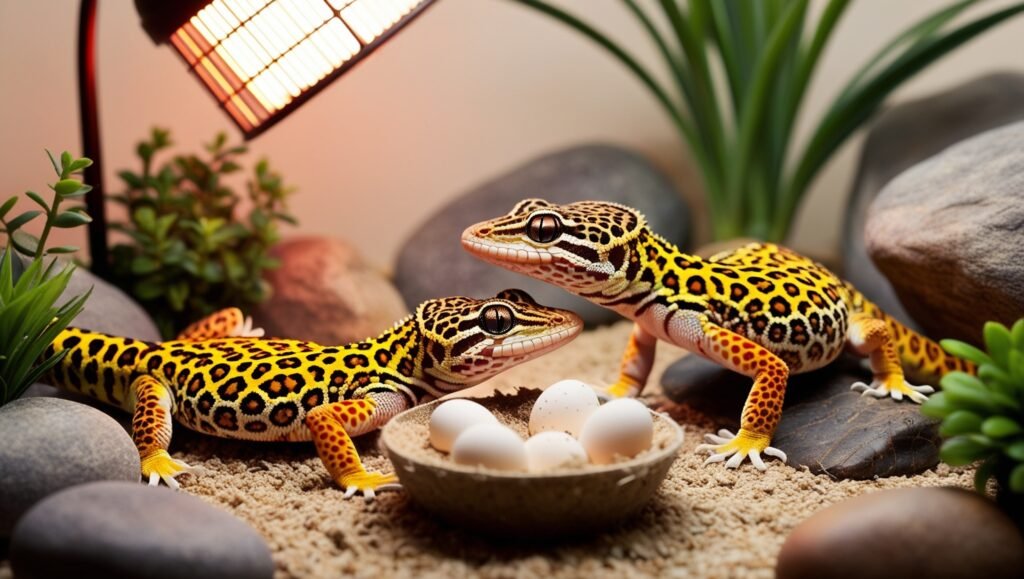How to Care for Reptile Pets

How to Care for Reptile Pets
Discover expert tips on how to care for reptile pets, including habitat setup, diet, health checks, and more. Ensure your reptile thrives with this comprehensive guide.
Advertisement
Introduction to how to Care for Reptile Pets:
- Understanding Reptile Behavior and Needs:
Reptiles have distinct behaviors and needs that differ significantly from those of mammals. These cold-blooded creatures rely heavily on their environment to regulate their body temperature. Understanding their natural behaviors, such as basking, hiding, and hunting, is crucial for creating a habitat that meets their needs. - Importance of Proper Care for Reptiles:
Proper care is vital for the health and longevity of your reptile. Unlike more common pets, reptiles can suffer stress and health issues if their environment is improperly maintained. Every aspect of their care must be carefully managed, from providing the right temperature and humidity levels to ensuring they receive a balanced diet.
Choosing the Right Reptile Pet:
- Popular Reptile Pets for Beginners:
When choosing a reptile as a pet, it’s essential to consider your experience level. Some reptiles, like leopard geckos, corn snakes, and bearded dragons, are great for beginners due to their relatively easy care requirements. These species are generally hardy, have straightforward dietary needs, and are more tolerant of handling. - Factors to Consider Before Choosing a Reptile:
Before bringing a reptile home, consider factors such as the space available for an enclosure, the cost of care, and the species’ specific environmental needs. Research the lifespan, size ma, maturity, and temperament of potential reptile pets to ensure you can commit to their care for the long term.
Setting Up the Ideal Habitat:
- Selecting the Right Enclosure:
The enclosure is one of the most critical aspects of reptile care. The size and enclosure type match the needs of the reptile species you choose. For example, arboreal reptiles require tall enclosures with plenty of vertical space, while terrestrial species need more ground area. Glass terrariums, wooden vivariums, and plastic enclosures are all popular options, each with benefits depending on the reptile’s needs. - Temperature and Humidity Control:
Reptiles are ectothermic, relying on external heat sources to regulate their body temperature. Setting up a temperature gradient within the enclosure allows the reptile to move between warmer and cooler areas as needed. Maintaining proper humidity levels is also essential for skin health, shedding, and respiratory function. Use thermometers and hygrometers to monitor these environmental factors closely. - Lighting Requirements for Reptiles:
Proper lighting is crucial for reptiles, especially those that require UVB light to synthesize vitamin D3, which is necessary for calcium absorption. Without adequate UVB exposure, reptiles can develop metabolic bone disease and other health issues. Ensure that your reptile’s enclosure has the correct type of lighting, and replace bulbs regularly to maintain effectiveness.
Feeding Your Reptile Pet:
- Understanding Reptile Diets:
Reptile diets vary widely depending on the species. Some reptiles are herbivores, while others are carnivores or omnivores. For instance, iguanas primarily eat leafy greens, whereas snakes generally require a diet of whole prey, such as mice or rats. Researching It’s your specific reptile’s dietary needs is crucial to providing a balanced and nutritious diet. Failure to meet these needs can lead to malnutrition, obesity, or other health issues. - Feeding Frequency and Portion Sizes:
The frequency and portion size of feedings depends on the species, age, and size of your reptile. Juvenile reptiles often require more frequent feedings compared to adults. For example, young bearded dragons might eat daily, while adults may only need food every other day. Overfeeding can lead to obesity, while underfeeding can cause malnourishment, so monitoring your reptile’s weight and adjusting feeding schedules are essential. - Common Feeding Mistakes to Avoid:
Avoid common feeding mistakes, such as offering inappropriate food items, feeding live prey without supervision, or failing to provide a balanced diet. For herbivores, ensure a variety of vegetables and fruits are offered to meet their nutritional needs. Carnivores should be mindful of the size of the prey, as feeding prey that is too large can cause choking or digestive issues.

Maintaining Your Reptile’s Health:
- Regular Health Checks:
Regular health checks on your reptile are essential for early detection of potential health problems. Observe your reptile daily for behavior, appetite, and physical appearance changes. Look for signs such as lethargy, abnormal shedding, changes in stool, or visible injuries. Regularly weigh your reptile to monitor for unexplained weight loss or gain. - Recognizing Signs of Illness:
Reptiles are often adept at hiding illness, so it’s essential to be vigilant. Common signs of disease include lack of appetite, weight loss, swollen joints, labored breathing, or unusual discharge from the eyes or nose. If you notice any of these symptoms, it’s crucial to seek veterinary care promptly to address potential health issues before they worsen. - Finding a Reptile Veterinarian:
Not all veterinarians are experienced with reptiles, so it’s essential to find one that specializes in reptile care. A reptile veterinarian will be familiar with your pet’s specific needs and health concerns, providing more accurate diagnoses and treatments. Establish a relationship with a reptile vet soon after acquiring your pet to ensure you’re prepared in case of emergencies.
Handling and Interacting with Reptiles:
- Safe Handling Practices:
Handling reptiles requires care to avoid causing stress or injury to the animal. Always support your reptile’s body fully, and avoid grabbing it by the tail or limbs. Some species, like snakes, are more tolerant of handling, while others may become stressed or defensive. Always wash your hands before and after handling to prevent the spread of bacteria, such as salmonella, which reptiles can carry. - Building Trust with Your Reptile:
Building trust with your reptile takes time and patience. Start by allowing the reptile to acclimate to your presence without direct handling. Gradually introduce short, gentle handling sessions, allowing the reptile to feel secure in your hands. Over time, your reptile may become more accustomed to handling and less likely to exhibit stress behaviors.
Cleaning and Maintenance of the Habitat:
- Regular Cleaning Schedule:
Maintaining a clean habitat is essential for your reptile’s health and well-being. A regular cleaning schedule should include daily spot cleaning to remove waste and uneaten food and a more thorough cleaning once a week. During deep cleaning, replace the substrate, clean all decorations, and disinfect the enclosure. Regular cleaning helps prevent the buildup of harmful bacteria and parasites that could endanger your reptile’s health. - Safe Cleaning Products to Use:
Using safe, non-toxic products is essential when cleaning your reptile’s habitat. Avoid harsh chemicals, as they can leave harmful residues that your reptile may ingest or absorb. Instead, opt for reptile-safe disinfectants available at pet stores or use a diluted bleach solution (1 part bleach to 10 parts water) for deep cleaning. Always rinse thoroughly and allow everything to dry completely before returning your reptile to the enclosure.
Common Issues and How to Resolve Them:
- Dealing with Shedding Problems:
Shedding is a natural process for reptiles, but sometimes they may experience difficulties, known as dysecdysis. Inadequate humidity levels, poor nutrition, or health issues can cause this. If your reptile is struggling to shed, you can help by providing a humid hide, misting the enclosure, or gently soaking the reptile in lukewarm water. Never pull off unshed skin, as this can cause injury. Ensure that the habitat’s humidity is within the ideal range for your species to prevent future shedding problems. - Addressing Aggressive Behavior:
Some reptiles may exhibit aggressive behavior, which can be triggered by stress, illness, or improper handling. If your reptile is displaying aggression, try to identify the cause. Ensure the enclosure is appropriately sized, with enough hiding spots to reduce stress. If the aggression is due to handling, give your reptile more time to acclimate to your presence before attempting to handle it again. Sometimes, consulting with a reptile behavior specialist or veterinarian may be necessary. - Troubleshooting Appetite Loss:
Various factors, including stress, illness, or environmental changes, can cause a loss of appetite in reptiles. First, check that the habitat’s temperature and humidity levels are correct, as reptiles rely on their environment to regulate their metabolism. If these are correct and your reptile still refuses food, it may be a sign of illness or stress. Monitor for other symptoms, and consider a vet visit if the problem persists. Temporary fasting can be regular for some species, especially during brumation or breeding, but prolonged refusal to eat should be investigated.
Seasonal Care Considerations:
- Adapting Care for Different Seasons:
Reptiles can be sensitive to seasonal changes, which may require adjustments to their care routine. In the winter, you might need to provide additional heating to maintain the correct temperature in the enclosure. In summer, be mindful of overheating, especially in species that require more relaxed environments. Adjust lighting schedules to mimic natural day lengths and monitor humidity levels closely as they fluctuate with the seasons. - Hibernation and Brumation in Reptiles:
Some reptiles undergo hibernation or brumation (a similar but less intense form of dormancy) during winter. This process is natural and can help regulate their biological rhythms. If your reptile species is known to brumate, prepare by gradually reducing the temperature and light exposure in the enclosure. During brumation, your reptile will become less active and eat less or not at all. Monitoring them closely during this period ensures they remain healthy and hydrated.
Breeding and Reproduction:
- Understanding Reproductive Behavior:
Reptile breeding requires a thorough understanding of the species-specific reproductive behaviors and cycles. Many reptiles have particular environmental triggers that signal the start of the breeding season, such as changes in temperature, humidity, or light cycles. For example, some species of snakes and lizards need a cooling period, known as brumation, to stimulate reproductive behavior. Researching and replicating these conditions in captivity is essential to encourage successful breeding. - Preparing for Breeding:
If you plan to breed your reptiles, ensure you are fully prepared for the responsibilities that come with it. This includes providing an appropriate nesting area or egg-laying site, ensuring both male and female reptiles are in optimal health, and understanding how to care for the eggs or offspring. Some reptiles require specific incubation temperatures for their eggs, which can determine the sex of the offspring. Additionally, be prepared to care for or rehome the young once they hatch or are born.

Advertisement
Conclusion:
- Summary of Key Care Tips:
Caring for a reptile pet is a rewarding but demanding responsibility that requires a commitment to understanding and meeting its unique needs. From choosing the suitable species to setting up an ideal habitat, feeding appropriately, and maintaining its health, every aspect of reptile care contributes to its overall well-being. Regular observation and proactive care ensure your reptile thrives in captivity. - Encouragement for Responsible Reptile Ownership:
Reptiles can make fascinating and long-lived pets, but they are not the right choice for everyone. Educating yourself thoroughly before bringing a reptile into your home is crucial, considering both the time and financial investment required. Responsible reptile ownership not only enhances the life of your pet but also contributes to the broader conservation of these incredible animals.
FAQs
- What is the best beginner reptile pet?
The best beginner reptile pets include leopard geckos, corn snakes, and bearded dragons, as they have relatively simple care requirements and are more tolerant of handling. - How often should I feed my reptile?
Feeding frequency varies by species, age, and size. Juvenile reptiles often require daily feedings, while adults, depending on their metabolism, may only need to be fed every other day or even once a week. - What signs indicate my reptile is sick?
Common signs of reptile illness include lethargy, loss of appetite, abnormal shedding, respiratory distress, and visible injuries or swelling. If you notice any of these signs, consult a reptile veterinarian. - Can reptiles recognize their owners?
While reptiles do not form the same bonds as mammals, some species can learn to recognize their owners, mainly through scent and routine interactions, leading to a more relaxed response to handling. - How do I safely clean my reptile’s enclosure?
Clean the enclosure using reptile-safe disinfectants or a diluted bleach solution. Rinse thoroughly and allow everything to dry completely before returning your reptile to its habitat to avoid harmful chemical exposure.
Advertisement


